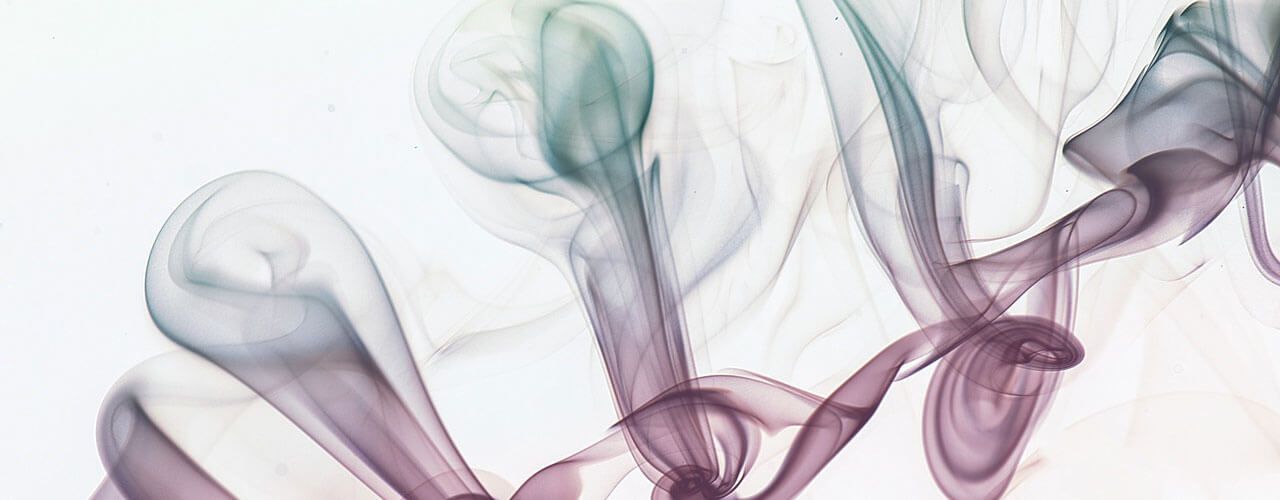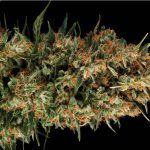Cannabis Tasting Guide | How to taste marijuana?
The work of a Cannabis taster is quite similar to that of a wine taster. The person in this profession is responsible for sampling each and every wine and determining, through its clarity, aroma, and taste, the quality of the wine without ever getting overly intoxicated. Similarly, the Cannabis taster is able to sample the effect and flavor of marijuana while taking care not to overdo it, because if the effect is too strong, they will not be objective in the next test. In this article, we share a few tricks used by tasters to thoroughly sample different types of marijuana. Keep reading to learn all about how to taste marijuana.

The Importance of Knowing, Distinguishing, and Choosing
It is important to note that Cannabis varieties are quite diverse. For example, while some produce a powerful effect on the mind, their taste on the palate is rather bland. However, the opposite is also true: there are some varieties that may have an excellent flavor, but their effect is weak—so much so that we can only smile and politely thank the person who offers them to us.
In fact, some experts in the field mention that there are people who have an innate ability to distinguish flavor and aroma among a multitude of varieties. So much so that these individuals are highly sought after for perfume creation or in the wine industry. However, the rest of us can educate, refine, and improve, as much as possible, our ability to determine the flavor and effect of marijuana. We provide you with some key points on how to taste marijuana.
High and Low Effects
The first thing we must consider in a marijuana tasting is what is known as the high and low effects that the herb can produce. At least two types can be distinguished: the UP strains, which have a stimulating effect, and the DOWN strains, which possess more sedative characteristics.
In the case of sativa strains, they tend to stimulate emotions, making the person more sociable and open. On the other hand, indica strains produce more relaxing effects thanks to their high cannabinoid content. An example of a stimulating Sativa (UP) is Super Silver Haze and an example of a relaxing Indica (DOWN) is Sensi Star.
Therefore, in this article we will refer to UP strains as those that mentally activate us for work, and to DOWN strains as those that relax us so much that, so to speak, they leave us glued to the sofa.
We will also mention the terms body and mind to refer to the experiences that Cannabis produces. Likewise, it is very true that a late or early harvest can alter its qualities.

Duration of the Marijuana Effect
Another important aspect in tasting is the duration of the marijuana effects. Some varieties may have an effect lasting about 15 to 30 minutes, while others can extend up to 6 or 7 hours. Techniques such as harvesting at the right moment, proper drying, and appropriate curing influence both the quality and the duration of the effect.
Cannabis Tolerance
Another notable aspect in marijuana tasting is tolerance. This refers to the degree to which the body becomes accustomed to a particular type of marijuana, allowing one to continue experiencing the same sensation as on the first use. A strain with high tolerance will require a larger amount to achieve the desired effect, whereas one with low tolerance will allow you to enjoy the experience consistently.
The Pinnacle, Peak, or Summit of Flavor
During a tasting, it is vital to know the limit or “ceiling” of flavor tolerance. This indicates how many puffs can be taken without losing the perception of flavor. Most indica varieties reach their peak after about 10 puffs, although it is recommended not to exceed 4 or 5 to avoid undesirable effects such as throat irritation or coughing. Make good use of the first puffs, as combustion can diminish the perception of subtle nuances.
Side Effects on the Mind
One of the final aspects to consider in marijuana tasting is the side effects on the mind. Some varieties may cause anxiety or amplify certain emotions, while others may suppress them. It is important to note that these effects vary depending on the strain and the consumer’s predisposition. In general, the best marijuana is the one that produces the least anxiety.
Aroma and Flavor of Cannabis
Aroma and flavor are essential in determining how desirable a herb can be. There are numerous sensory profiles in Cannabis. In fact, although a complete olfactory map has yet to be achieved, studies on terpenes have allowed flavors to be classified into categories such as:
- Fruity: strawberries, pear, pineapple, berries, blackberries, etc. Marijuana with a fruity flavor.
- Citrus: lemon, orange, grapefruit… Marijuana with a citrus flavor.
- Earthy: wet earth, wood, aged, pasty, smoky. Marijuana with an earthy flavor.
- Herbal: green, chlorophyll-rich, grassy. Marijuana with an herbal flavor.
- Chemical or incense-like: metallic, kerosene-like, oily, astringent. Marijuana with an incense-like flavor.
- Complex: a mixture of several of the above. Marijuana with a complex flavor.
With all this information, the following steps are presented to conduct a marijuana tasting under the best conditions and with the highest possible precision.
How to Taste Marijuana: A Complete Guide
Each of these points will serve as a guide both to prepare the tasting experience and to carry it out correctly. Below, we provide details to help you better understand each step.
Environment and Preparation
Before immersing yourself in the sensory world of Cannabis, it is crucial to set the stage. Your environment and preparation can significantly influence your tasting experience. Always try to choose the same quiet and clean place, and pay attention to aspects such as:
Temperature and Humidity
Keep the humidity around 60% so that your sense of smell and taste function optimally. Excessive humidity can dilute both the aroma and the flavor.
Ambient Light
Natural light is ideal for observing the true colors of the flower; if that is not possible, a white LED light can be a good alternative.
Evaluation Surface
Use a clean, light-colored surface to place the flower, which will facilitate visual evaluation.
Tasting Method
Whether you use a vaporizer or a joint, the chosen method will influence the flavors you perceive.
Pre-Tasting Preparation
Avoid using strong perfumes and aromatic foods (such as coffee) before the tasting, as they can interfere with your senses. Use wooden matches instead of lighters to avoid gas flavors.
Interestingly, many tasters claim that the palate is most receptive around 12:30 PM.
Marijuana Tasting
Now that you have everything prepared, let’s move on to the main part: the marijuana tasting.
Sensory Tasting
Sensory tasting involves using all your senses to evaluate the Cannabis, gathering valuable information from each. Below, the main aspects to evaluate are broken down:
Appearance
Observe the vivid colors, the density of the buds, and the presence of bright, well-defined trichomes. A neglected appearance, with crushed buds or toasted colors, may indicate issues with cultivation, drying, or curing.
Tactile Sensation
The bud should feel dense, sticky, and have a considerable weight, which indicates a high trichome content. When pressed lightly, it should exhibit an initial firmness followed by a spongy texture inside.
Aromas
Take a deep breath to appreciate the full range of aromas. Each strain has a characteristic aroma, but it may also have subtle nuances perceived at different intensities. Try to smell the flower without burning it to capture all the details.
Taste Testing
There are two modes of oral taste testing: cold tasting and hot tasting. For cold tasting, draw from the joint or vaporizer without turning it on, which will allow you to appreciate details that might be lost when the material is heated. Then, perform hot tasting by taking a small puff and letting the flavor evolve in your mouth, noting the nuances on the inhale and exhale.
Effect Tasting
Once you have evaluated the appearance, texture, aroma, and taste, it is important to analyze the effects. Remember that the experience is subjective and can vary from person to person. Consider the following:
Primary Effect
Determine whether the herb is stimulating or relaxing, or if it presents a mix of both effects.
Intensity and Duration
Observe how quickly the effects begin, how long they reach their peak, and when they start to dissipate. The intensity of the effect is usually primarily related to the content of THC, although other compounds also play a role.
Side Effects
Take into account any side effects, such as dry mouth, dizziness, or discomfort, which may vary depending on the strain and the method of consumption.
Cannabis Tolerance
The consumer’s tolerance level also influences the tasting experience. Regular users may need a break to fully appreciate the nuances of each strain, while beginners should start with low doses to prevent the intensity or speed of the effect from masking the sensory details.
The experience is ultimately very personal. Only through practice can one become an expert taster.
If you found this guide on how to taste marijuana useful, share it and join our mailing list and social networks. Before you finish, we invite you to visit our feature on distinguishing good marijuana from bad marijuana.
Additional Information and Scientific Evidence
The sensory evaluation of Cannabis shares similarities with wine tasting, but it also possesses unique characteristics derived from its complex composition of terpenes and cannabinoids. Scientific studies have demonstrated that the synergy between these compounds, known as the “entourage effect,” influences the perception of aroma, flavor, and effects of Cannabis.
For example, Russo (2011) showed how the interaction between terpenes and cannabinoids enhances the sensory experience, while Hazekamp and Fischedick (2012) explained that differences in chemical profiles (or chemovars) account for the wide variety of flavors and aromas in Cannabis. Additionally, ElSohly (2017) emphasizes the importance of cultivation and post-harvest methods to preserve the plant’s sensory integrity.
Practical Tips for an Optimal Tasting
- Prepare the environment: Ensure that the tasting area is clean, with proper lighting and controlled temperature and humidity.
- Avoid interferences: Do not use strong perfumes or consume aromatic foods before the tasting.
- Use proper tools: Use a white, clean surface to evaluate the flower, and if possible, use tools that do not alter the aroma.
- Record your observations: Take notes on each phase of the experience (appearance, aroma, flavor, effects, and duration) to compare and improve your perception.
- Practice consistently: Sensory tasting improves with experience; each session will help refine your senses.
References
- Russo, E. B. (2011). Taming THC: potential cannabis synergy and the entourage effects of phytocannabinoid-terpenoids. British Journal of Pharmacology, 163(7), 1344–1363. https://doi.org/10.1111/j.1476-5381.2011.01238.x
- Hazekamp, A. & Fischedick, J. (2012). Cannabis – from cultivar to chemovar. Drug Testing and Analysis, 4(7-8), 660–667. https://doi.org/10.1002/dta.421
Frequently Asked Questions (FAQ)
What is the difference between an expert taster and a beginner?
An expert taster has the ability to discern subtle nuances in aroma, flavor, and effects, while a beginner may need several practice sessions to fine-tune their senses and achieve objective evaluations.
What role do terpenes play in the sensory experience of Cannabis?
Terpenes not only provide the characteristic aroma and flavor, but also, by interacting with cannabinoids, enhance the “entourage effect,” which influences the overall consumer experience.
How does tolerance affect marijuana tasting?
High tolerance can mask some sensory nuances, making it more difficult to appreciate the details of a strain. Therefore, it is recommended that regular consumers take breaks to reset their palate.
What environmental conditions are ideal for a Cannabis tasting?
A controlled environment with proper lighting, moderate temperature, and humidity around 60% favors a precise evaluation of the flower, allowing its nuances to be better distinguished.
Founder of Experiencia Natural, creative and entrepreneur, designer, master in grower and marketing. For a normalization of all plants and substances, giving priority to patients and users.












